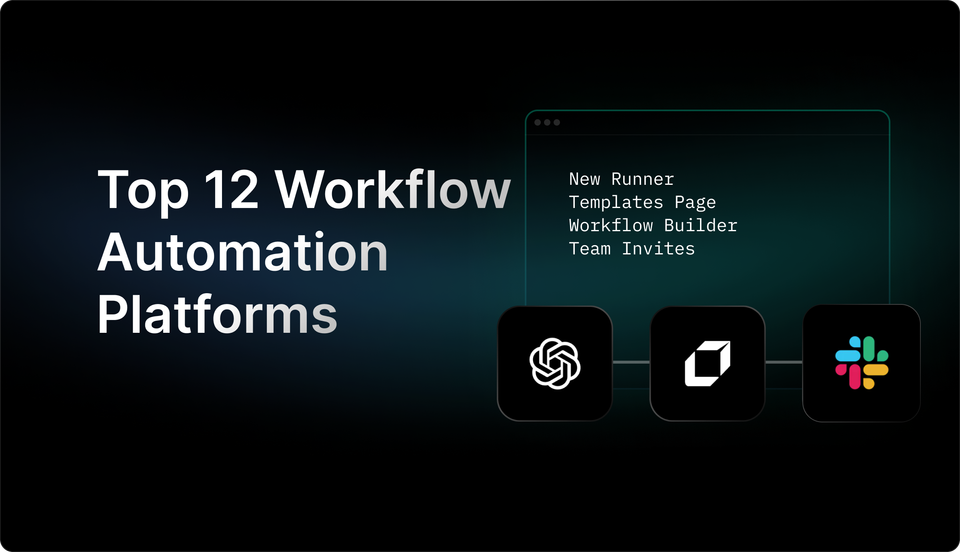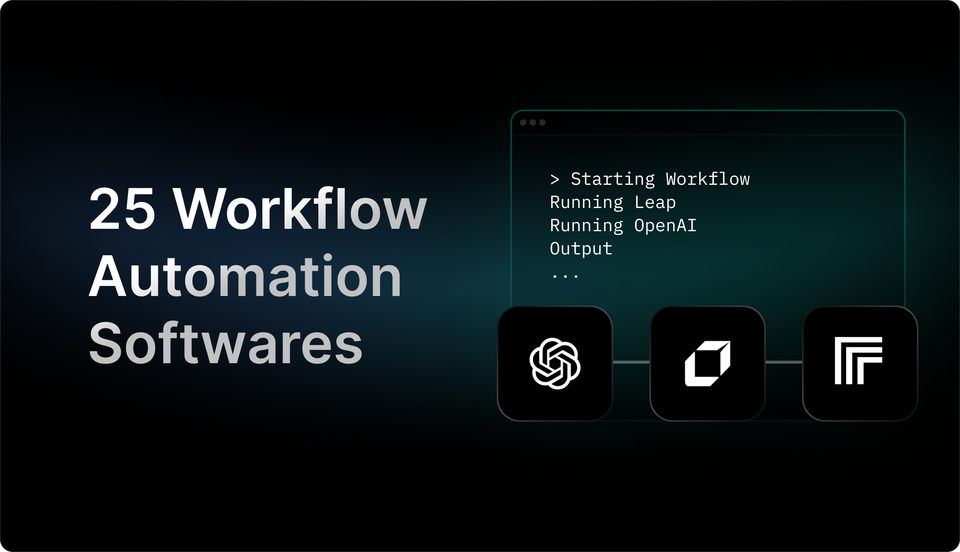The Ultimate Guide On Jira Automation in 2024
Ready to take your Jira skills to the next level? Explore the possibilities of Jira Automation in 2024 and revolutionize the way you work.

Are you looking to streamline your workflows and boost productivity? Dive into the world of Jira automation, a powerful tool that automates repetitive tasks, saving you time and effort. With workflow automation at its core, Jira automation can revolutionize how you manage projects, resolve issues, and collaborate effectively. Discover how to maximize efficiency and optimize your processes with Jira automation – it's a game-changer!

What is Jira Automation?

Jira Automation is a groundbreaking feature within Jira Software and Jira Cloud that revolutionizes project management by automating tasks through if-this-then-that rules. This "no-code" automation tool empowers users to streamline their workflows without requiring any technical expertise.
The Concept of "If-This-Then-That" Rules
In Jira Automation, if-this-then-that rules dictate that when a specific event occurs (the "if" condition), a corresponding action should follow (the "then" condition). For example, if a sub-task is completed, then automatically close the parent task. This logic-driven approach simplifies project management by automating repetitive tasks.
Examples of Automation Tasks
1. Closing Parent Tasks
Automatically close a parent task when all its sub-tasks are completed.
2. Assigning Tasks
Assign all tasks from a board to a designated team member based on predefined criteria.
3. Importing Issues
Import customer issues from external Jira apps, create new issues, and assign them to team members.
4. Sending Updates
Routinely send task status updates to stakeholders to keep them informed and engaged.
Take Your Automation to the Next Level with Leap
Leap offers AI Workflows that enable you to elevate your automation game to new heights. Partnered with industry leaders like Zapier and Vercel, Leap empowers you to create custom AI automations effortlessly. Seamlessly integrate advanced AI text, image, and audio models into your existing tools for enhanced efficiency and productivity. Explore the endless possibilities of automation with Leap Workflows and supercharge your work today.
Try Leap's AI Workflows tool for free and unlock the true potential of automation.

Related Reading
Key Elements of Jira Automation Rules

Triggers: Initiating Rule Execution
Triggers serve as the catalyst for automation rules in Jira. These components kick off the execution of your rules based on specific events within Jira or even external services like Bitbucket or GitHub.
Triggers can range from simple actions like when an issue is created or assigned, to more complex events like when an issue is transitioned between statuses or when work is logged. By setting up triggers, you define the starting point for your automation rules, ensuring they respond to the right events at the right time.
Conditions: Refining Rule Scope
Conditions act as the gatekeepers of your automation rules, determining whether the rule continues to run or halts based on specified criteria. These components allow you to refine the scope of your rules by setting conditions that must be met for the automation to proceed.
Whether it's checking issue field values, working with JQL queries, or verifying user permissions, conditions help ensure that your automation is targeted and effective, focusing on the tasks that matter most.
Actions: The Executors of Rule Tasks
Actions are the workhorses of your automation rules, carrying out the tasks defined within the rule. From assigning issues to creating sub-tasks, sending notifications to editing issue details, actions encompass a wide range of functionalities to streamline your workflows. By selecting the appropriate actions for your rules, you can automate repetitive tasks, enforce consistency in processes, and enhance overall efficiency within your Jira environment. Actions bring your automation rules to life, making tangible changes and updates based on predefined conditions and triggers.
By understanding and effectively leveraging triggers, conditions, and actions in Jira automation, you can create powerful automation rules that drive productivity, consistency, and collaboration within your Jira projects. Start exploring the possibilities of automation today and unlock the full potential of your Jira environment.
Advanced Features in Jira Automation

In Jira Automation, the branching feature allows actions to apply not only to the main issue but also to related issues such as sub-tasks, epics, or linked issues. This feature is crucial for creating powerful rules that can work seamlessly across complex issue relationships. For example, you can set up rules to ensure all sub-tasks of a parent issue are resolved before progressing.
Leverage Smart Values for Enhanced Automation Capabilities
Smart values in Jira Automation enable users to access and manipulate a wide range of issue data within their site. These values add complexity and power to automation rules, allowing for dynamic actions based on real-time information. For instance, smart values like {{now.plusDays(5)}} can calculate dates, while {{issue.summary}} provides the issue's summary for reference.
Define the User Executing Automation Rules with Rule Actor
The rule actor in Jira Automation is the user who triggers a rule and must possess the necessary permissions to execute actions defined in the rule. It's important to ensure that the rule actor has the required permissions, such as Add comment, to prevent errors during rule execution. While the default rule actor is the Automation app user, users now have the flexibility to change the rule actor for their automation rules.
Monitor Rule Status for Effective Automation Management
Jira Automation allows users to view the status of their automation rules to determine if they are active or inactive. Understanding the rule status ensures that rules are running as intended and can be easily managed. Whether a rule is enabled, disabled, or in draft mode, users can quickly identify its current status on the rule details screen.
Track Automation Activities with Audit Log
Each automation rule in Jira comes with an audit log that provides a detailed history of when the rule was triggered, its execution results, and any actions taken. Users can review audit logs for individual rules, projects, or globally to debug and optimize automation processes effectively. Monitoring audit logs is a valuable practice for ensuring the reliability and performance of automation rules.
Automate Tasks with Leap's AI-Powered Solutions
Leap helps you to automate your work with the power of AI. Partnered with Zapier, Vercel, and more, Leap enables you to supercharge your work by allowing you to create custom AI automations. Create sophisticated AI automations with no-code. Connect the tools you love with best-in-class AI text, image, and audio models.
Supercharge your existing tools with seamless AI integrations to OpenAI, Microsoft, and more. From summarizing documents, to voice translation, to AI call transcription, to AI avatar and asset generation, to SEO automation, automate anything with Leap Workflows. The opportunities for automation are endless with Leap workflows.
Try Leap’s AI Workflows tool for free today.
Setting Up A Jira Automation Rule

Creating a Jira Automation Rule
To start automating tasks in Jira, you first need to navigate to the Automation settings and select “Create rule” in the top right corner. This will initiate the process of setting up a new rule.
Choosing the Trigger
For our example, let's use the “Issue created” trigger, which means the rule will be activated whenever a new task is created in Jira. After selecting the trigger, make sure to save your settings to proceed to the next step.
Setting Conditions
Next, you will need to define conditions for the rule to execute. One common condition is to check a specific field in the newly created issue. In our case, we can select the “Issue fields” condition, set the Field to “Issue Type,” Condition to “equals,” and the Value to compare to “Issue.” This condition ensures that the rule only applies to newly created tasks.
Creating Actions
After setting the conditions, it's time to define the actions that the rule will perform. In this example, let's create a sub-task named “Check priority” when a new task is created. To do this, click on “New action,” select “Create sub-tasks,” add the sub-task details, and save your action.
Assigning Tasks
You can set up actions to assign the newly created sub-task to a specific team member. By clicking on “New action” and selecting “Assign issue,” you can choose a user as the assignee for the sub-task.
Finalizing and Testing
Once you have set up all the components of the rule, give it a descriptive name and enable it to start automating tasks in Jira. Before fully implementing the rule, it is crucial to test it thoroughly. By testing the rule, you can ensure that it functions as intended and refine it if necessary for optimal automation efficiency.
Continuous Refinement
Automation rules in Jira should not be static. Regularly review and refine your rules to adapt to changing workflows, optimize efficiency, and incorporate feedback from users. By continuously refining your automation rules, you can enhance productivity and streamline processes within your Jira environment.
Automate Your Work with Leap’s AI Workflows
Leap helps you to automate your work with the power of AI. Partnered with Zapier, Vercel, and more, Leap enables you to supercharge your work by allowing you to create custom AI automations. Create sophisticated AI automations with no-code. Connect the tools you love with best-in-class AI text, image, and audio models.
Supercharge your existing tools with seamless AI integrations to OpenAI, Microsoft, and more. From summarizing documents, to voice translation, to AI call transcription, to AI avatar and asset generation, to SEO automation, automate anything with Leap Workflows. The opportunities for automation are endless with Leap workflows.
Try Leap’s AI Workflows tool for free today.
5 Benefits of Jira Automations

1. Error Reduction
Jira automation plays a pivotal role in reducing errors by consistently following predefined rules. This ensures data accuracy, compliance, and upholding high standards within your projects. By automating repetitive tasks prone to human error, you can minimize costly mistakes and maintain the integrity of your project data.
2. Improved Collaboration
One of the key advantages of Jira automations is the enhancement of collaboration among team members. By automating notifications, task assignments, and updates, team members are kept informed of their responsibilities in real time. This leads to improved teamwork, increased productivity, and a more cohesive project environment.
3. Efficiency and Time Savings
Efficiency and time savings are significant benefits of implementing Jira automations. By automating routine tasks such as issue assignments, status updates, and notifications, team members can focus on more strategic work. This results in smoother task progression through workflows, allowing projects to move forward swiftly and efficiently.
4. Enhanced Visibility
Jira automations provide real-time visibility into task and project progress, offering transparency throughout the project lifecycle. This visibility enables easy tracking of task status, identification of bottlenecks, and informed decision-making for stakeholders. With enhanced visibility, project managers can make timely adjustments and ensure projects stay on track.
5. Cost Savings
Automation through Jira helps organizations save costs by reducing labor needs and operational expenses. By automating repetitive tasks, teams can allocate resources more efficiently and optimize cost management. This leads to significant financial savings for organizations, making Jira automation a valuable investment for long-term efficiency and profitability.
Experience Seamless Automation with Leap's AI Workflows
Leap helps you to automate your work with the power of AI. Partnered with Zapier, Vercel, and more, Leap enables you to supercharge your work by allowing you to create custom AI automations. Create sophisticated AI automations with no-code. Connect the tools you love with best-in-class AI text, image, and audio models.
Supercharge your existing tools with seamless AI integrations to OpenAI, Microsoft, and more. From summarizing documents to voice translation, to AI call transcription, to AI avatar and asset generation, to SEO automation, automate anything with Leap Workflows. The opportunities for automation are endless with Leap workflows.
Try Leap’s AI Workflows tool for free today.
Related Reading
- Accounts Payable Workflow Automation
- Business Automation Workflow
- Crm Workflow Automation
- Document Workflow Automation
- Education Workflow Automation
- Email Workflow Automation
- Enterprise Workflow Automation
- Hr Workflow Automation
- Intelligent Workflow Automation
- Marketing Automation Workflow Examples
- Legal Workflow Automation
- Workflow Automation Vs Rpa
- Small Business Workflow Automation
- Workflow Process Automation
- Ai Workflow Automation
Top 3 Jira Automation for Your Sprint Projects

1. Automating Jira to Close Duplicate Issues
Closing duplicate issues in Jira can streamline workflows and prevent confusion. By setting up automation rules in Jira, you can automatically identify and close duplicate issues, ensuring that efforts are focused on resolving unique problems rather than redundant ones.
2. Streamlining Workflows with Automatic Task Creation
Automation in Jira allows for the automatic creation of tasks, saving time and improving efficiency. This feature enables users to set up rules that automatically generate new tasks based on specified triggers and conditions. By automating task creation, teams can ensure that work is allocated promptly and accurately, enhancing productivity and collaboration.
3. Enhancing Customer Support with Automated Ticket Closure in Jira Service Management
Automated ticket closure in Jira Service Management simplifies the process of managing customer support tickets. By creating automation rules that trigger ticket closure based on specific criteria, such as issue resolution or time elapsed, teams can ensure that resolved tickets are promptly closed, maintaining a streamlined and organized support system.
Automate Your Workflow with Leap's AI-Powered Tools
Leap helps you to automate your work with the power of AI. Partnered with Zapier, Vercel, and more, Leap enables you to supercharge your work by allowing you to create custom AI automations. Create sophisticated AI automations with no-code. Connect the tools you love with best-in-class AI text, image, and audio models.
Supercharge your existing tools with seamless AI integrations to OpenAI, Microsoft, and more. From summarizing documents, to voice translation, to AI call transcription, to AI avatar and asset generation, to SEO automation, automate anything with Leap Workflows. The opportunities for automation are endless with Leap workflows.
Try Leap’s AI Workflows tool for free today.
Create Game Changing Automations Today With Leap’s AI Workflows
Leap Workflows empowers you to embrace the transformative capabilities of AI automation without the need for coding expertise. By seamlessly integrating with leading platforms such as Zapier and Vercel, Leap provides you with the tools to create custom AI automations tailored to your specific needs. Whether you require text summarization, image analysis, audio transcription, or any other AI-driven task, Leap has you covered.
Connect Your Favorite Tools
With Leap Workflows, you can effortlessly connect the tools you already love and use on a daily basis. By leveraging best-in-class AI models from industry leaders like OpenAI and Microsoft, you can enhance your existing workflows and streamline your processes. Imagine the possibilities of seamlessly integrating AI text, image, and audio models into your favorite apps and services – the potential for productivity gains is limitless.
Endless Automation Opportunities
From simplifying document summarization to automating voice translation and call transcription, Leap Workflows offers a wide array of automation possibilities. With features such as AI avatar and asset generation, as well as SEO automation, you can automate tasks that were once time-consuming and resource-intensive. The only limit to what you can achieve with Leap Workflows is your imagination – automate anything you can think of and watch your productivity soar.
Experience Seamless Integration
Leap Workflows provides a user-friendly interface that makes creating sophisticated AI automations a breeze. By eliminating the need for coding, Leap empowers you to focus on your work while letting AI handle the heavy lifting. Whether you are a seasoned automation expert or just starting out, Leap's intuitive platform ensures a seamless integration experience that will supercharge your productivity from day one.
Try Leap Workflows for Free Today
Ready to take your workflow automation to the next level? Try Leap Workflows today and experience the future of AI-powered automation. With a simple and intuitive interface, seamless integration with your favorite tools, and endless automation opportunities, Leap is the key to unlocking your full productivity potential.
Don't wait – sign up for a free trial of Leap Workflows and start automating your work with the power of AI today.
Related Reading
- Best Workflow Automation Software
- Low Code Workflow Automation
- Legal Workflow Automation Software
- Clickup Alternatives
- Hubspot Workflow
- Pipedream Alternatives
- No Code Workflow Automation Platform
- Pipedrive Alternatives
- Sharepoint Workflow Automation
- Pipedrive Workflow Automation Examples
- Workflow Automation Software
- Workflow Automation Platform
- Zapier Alternatives
- Workflow Automation Tools




